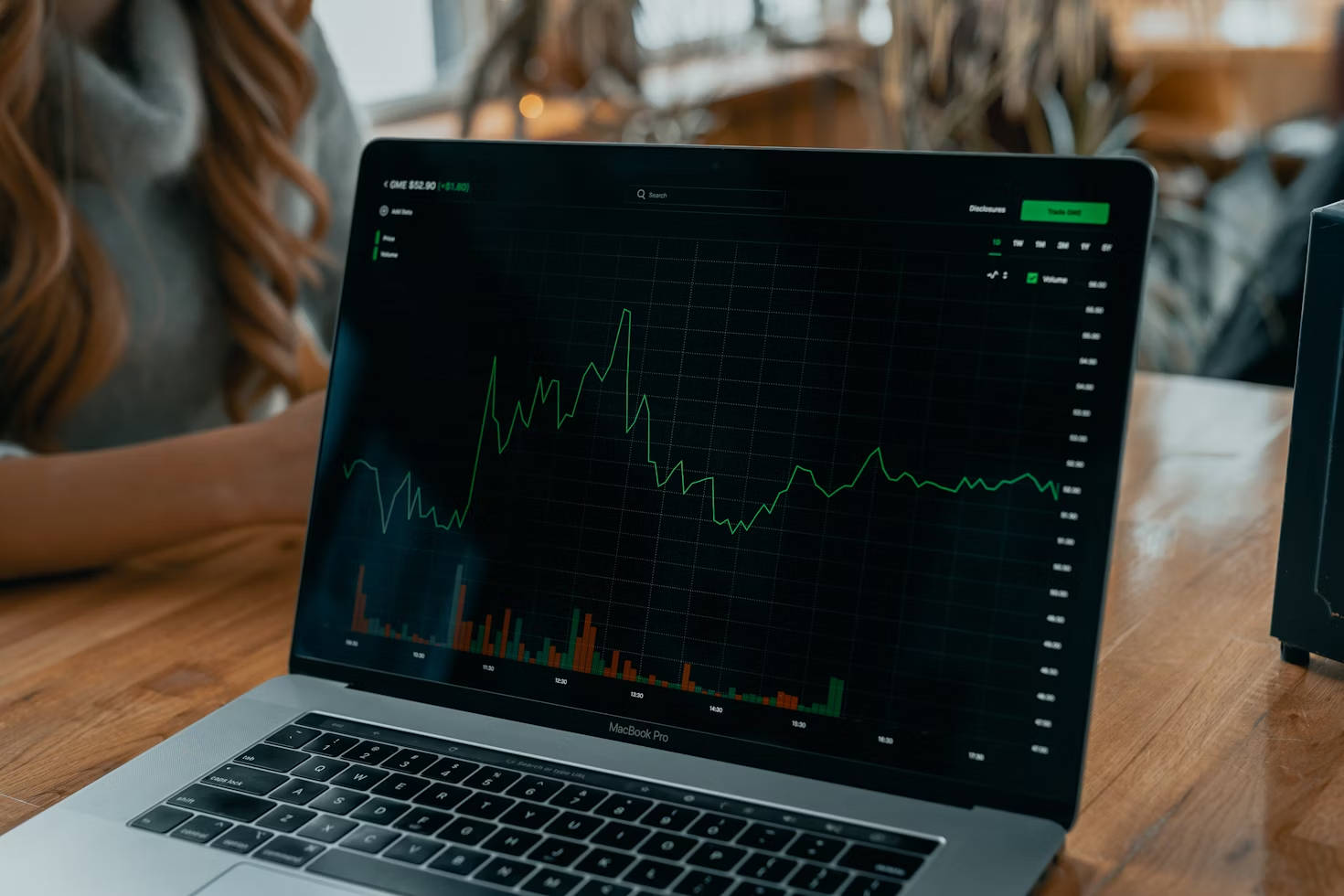Futures contracts: How to protect yourself against currency fluctuations

What if your margins evaporate because of an enemy you can't even see?
For French SMEs and ETIs involved in international trade, currencies are a silent battlefield. A 5% fluctuation on the Euro-Dollar, for example, could very well erase all your profits.
With 5.1 trillion dollars traded daily on the Forex futures market, according to the Bank for International Settlements, exchange rates can turn a promising sale into an unexpected loss. In 2023-2024, the EUR/USD oscillated between 1.05 and 1.12, while the GBP/USD saw variations of 10%, according to Bloomberg.
As we will see later, exchange rate changes have a direct impact on the amount you receive or pay.
These fluctuations threaten your international payments and margins, but there is a weapon: forward or future contracts. Let's find out how to use them to protect yourself.
What is a futures contract? Forwards vs Futures
A futures contract is an agreement to buy or sell an asset — in this case, a currency — at a pre-determined price, at a future date. This generic term encompasses two main types in the futures market: forward contracts and future contracts.
• Forward contract): Negotiated over the counter (OTC), it is a personalized contract between two parties, flexible for the specific needs of a company. For example, an SME can set 1 EUR = 1.05 USD for a payment of 1 million USD in 6 months. However, it involves higher counterparty risk, as it is not guaranteed by an exchange.
• Future contract (future forward contract or future contract example) : Standardized and traded on exchanges such as the CME Group or Eurex, it reduces counterparty risk thanks to clearing houses. An SME can buy EUR/USD futures for 250,000 USD at 1.05 EUR/USD, with increased liquidity but less flexibility.
According to the Bank for International Settlements, forwards represent 25% of the $5.1 trillion traded daily on Forex, while futures capture 15%, according to the CME Group, popularized by traders but accessible to businesses. These tools are essential to secure your trades on the futures market.
Why are currency fluctuations a danger?
Exchange rate changes have a direct impact on the amount you receive or pay:
• If you export, you benefit from an advantage if your domestic currency (such as the euro) depreciates compared to the buyer's currency (such as the dollar), because your products become cheaper and more competitive internationally, increasing your margins. On the other hand, if your currency strengthens, your exports cost more, reducing your profits.
• If you are an importer, this is the mirror effect: a depreciation of the euro increases the cost of your foreign purchases, compressing your margins, while an appreciation of the euro improves them by making imports less expensive.
And currencies are unpredictable. In 2023, EUR/USD varied by 7%, from 1.05 to 1.12, according to Bloomberg. For a French SME buying 1 million USD worth of components in the United States, this means a loss of €71,429 if the rate falls to 1.00 EUR/USD. An ETI exporting GBP 2 million to the United Kingdom saw its margins cut by €181,818 in 2024, with a fall from 1.20 to 1.10 EUR/GBP.
Let's use a simple example to explain. An SME exports wines to the United Kingdom with a contract of 500,000 GBP at 1.20 EUR/GBP. If the rate falls to 1.10 EUR/GBP (in other words if the Euro appreciates), the SME may lose €50,000:
• Initial value in euros :
-500,000 GBP × 1.20 EUR/GBP = 600,000€.
-This means that, if the SME receives 500,000 GBP and immediately converts them to that rate, it collects 600,000 euros.
• Fall in the rate : If the exchange rate falls to 1.10 EUR/GBP (1 GBP = 1.10€), the value in euros of the 500,000 GBP decreases:
-500,000 GBP × 1.10 EUR/GBP = 550,000€.
-The SME therefore receives €550,000 by converting its 500,000 GBP at this new rate.
• Loss calculation : To determine the loss suffered, we compare the initial value (600,000€) to the new value (550,000€):
-600,000 € - 550,000€ = 50,000€.
These risks affect 60% of European SMEs, according to Eostat, which report Forex losses, especially for exotic currencies such as the South African Rand (ZAR, volatility of 12% in 2023, according to XE.com). Exports/imports, supplier payments, and international services are all vulnerable, threatening your cash flow and competitiveness.
How futures contracts (forwards and futures) protect you
Futures contracts — whether forwards or futures — lock in a rate, eliminating uncertainty. Here's how they work to keep you safe:
• Forward contract example : A French textile SME plans to pay 500,000 USD to a Chinese supplier in 6 months. She signs a forward futures contract at 1.05 EUR/USD, setting the cost at 476,190€. If the rate falls to 1.00 EUR/USD, she saves €25,000. This “sample futures contract” illustrates OTC flexibility, adapted to specific needs, but with counterparty risk.
• Example future contractr: An ETI exporting 250,000 USD to Canada buys a future EUR/USD contract on the CME at 1.05 EUR/USD for 3 months. If the rate falls to 1.02, it avoids a loss of €7,353, thanks to market liquidity and low counterparty risk. This “example future contract” shows the advantageous standardization.
According to PwC, 70% of large companies use these tools, but only 30% of SMEs, leaving an opportunity to secure their margins in the face of increasing volatility (10% for some currencies in 2024).
Steps to use futures contracts effectively
Protecting your currencies requires a strategy. Here's how to do it:
• Analyze your needs : Evaluate volumes, currencies (EUR/USD, GBP/EUR) and durations (3, 6, 12 months). A textile SME chooses a EUR/CNY forward for 3 months out of 300,000 USD.
• Choose forwards or futures : Forwards for flexibility (OTC, customized), futures for liquidity (stock market, standardized). An ETI prefers a EUR/JPY future over the CME for its liquidity.
• Watch for volatility : Use Bloomberg Terminal to track EUR/USD (7% volatility in 2023) or GBP/USD (10% in 2024).
• Reliable partner : Work with experts to negotiate, like Keewe, to minimize costs and risks.
An SME avoided a loss of €15,000 in 2024 with a EUR/CNY forward, while an ETI secured €12,500 with a EUR/USD future on the CME.
Keewe's role in mastering Forex with forwards and futures
At Keewe, we help you control currency fluctuations with futures contracts (forwards and futures). Our FX desk is your asset: an accessible human touch, the possibility to ask your questions and to negotiate contracts directly with our advisers — real people. Whether you prefer a personalized forward for a payment of 1M USD in 6 months or a standardized future on the CME, our expertise guarantees competitive rates thanks to the questioning of multiple providers and real-time negotiation.
Example: An SME reduced its Forex costs by 20% in 2024 with a EUR/USD forward negotiated via our desk, securing its margins on a 750,000 USD contract. Keewe simplifies your exchanges, making them as competitive as they are sustainable.
Conclusion: Take control of your currencies
Futures contracts — forwards and futures — are essential tools for SMEs and ETIs in the face of Forex fluctuations. By setting a rate, you eliminate uncertainty, protect your margins and optimize your international payments. With volatility of 7-12% in key currencies in 2023-2025, and 60% of European SMEs affected by losses, it is time to act. Control your currencies with Keewe - www.keewe.eu — transform your risks into financial opportunities, simply and effectively!







